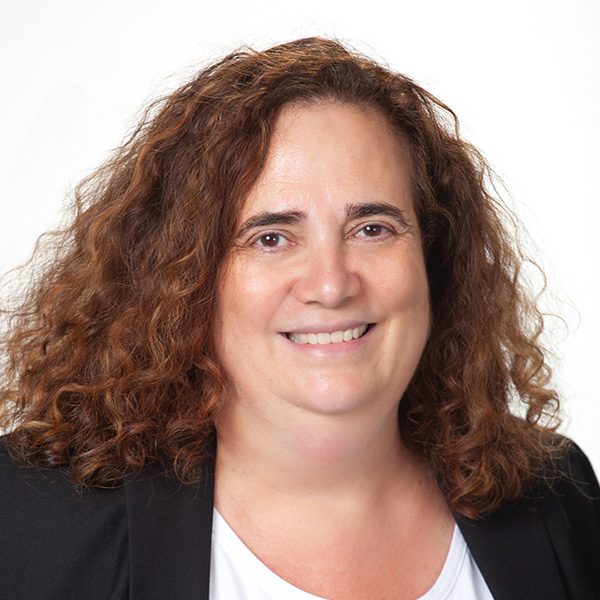Grief is the response to a loss: we use this term for losses of health, work or even the country of origin when immigrating, but in this article we will reserve it for the most frequent and probably most important loss, the death of a loved one. Bereavement is then the loss itself, and grief, the response.
The Western society we live on has justly discarded the rigid impositions of mourning, all those characteristics of attire and behavior required of the bereaved, with their well-demarcated deadlines (deep mourning -dull black fabrics, ordinary or second mourning -jewelry and white trims in dresses, and half-mourning -purple, lilac and gray) according to the relationship with the deceased. But along with these now laughable demanda, feelings, tears and grief, which of course are still there when someone we love dies, have also slipped down the drain of History. Let’s talk about grief, or better yet, let the poet speak:
H. Auden, Funeral Blues (1936-38)
Stop all the clocks, cut off the telephone.
Prevent the dog from barking with a juicy bone,
Silence the pianos and with muffled drum
Bring out the coffin, let the mourners come.
Let aeroplanes circle moaning overhead
Scribbling in the sky the message He is Dead,
Put crêpe bows round the white necks of the public doves,
Let the traffic policemen wear black cotton gloves.
He was my North, my South, my East and West,
My working week and my Sunday rest
My noon, my midnight, my talk, my song;
I thought that love would last forever, I was wrong.
The stars are not wanted now; put out every one,
Pack up the moon and dismantle the sun.
Pour away the ocean and sweep up the wood;
For nothing now can ever come to any good.
Thus, grief comprises thoughts, feelings, behaviors and physiological reactions; its experience is influenced by multiple and highly variable factors; we will see that the picture progresses from acute, intense and disruptive grief to the so called «integrated» or resolved grief, in which the loss is «integrated» or incorporated into the life experience leaving a bittersweet aftertaste. This progress is often erratic and can be difficult to ascertain while it is happening. The well-known stages of grief (denial, anger, bargaining, depression and acceptance) do not always or necessarily occur in that order (sorry, Dr. Kübler-Ross). And of course, neither there is a fixed time to go through these phases and reach grief resolution. Let’s start at the beginning, then.

Acute grief
The hallmark of acute grief is an intense focus on thoughts and memories of the deceased, accompanied by sadness and yearning. The poet guides us to its characteristics:
- Intense feelings of yearning for the deceased person.
- Insistent thoughts and memories of the lost person that preoccupy the mind, sometimes including hallucinations.
- Frustration and sadness due to the impossibility of being back together.
- Atraction towards objects and activities associated to the deceased.
- Disrupted appetite and sleep, as well as somatic symptoms such as heart palpitations and dizziness.
- Social withdrawal and disinterest in other people and activities.
- Confusion about one’s identity and feeling lost without the deceased.
- Disbelief and difficulties in accepting the loss.
- Impaired attention, concentration or memory.
The attachment theory states that we humans are biologically motivated throughout life to form secure, close relationships with a few other people. These are the people whom we love and who reciprocate love: they provide a «safe haven» to return to in periods of a stress and a secure base from which to explore the world, learn and adventure. Our loved ones contribute to our sense of identity and belonging. Representations of attachment relationships are internalized, tend to be stable and resistant to change, and influence multiple aspects of daily functioning, both conscious and unconscious.
Then, grief disrupts the attachment: the learning period in which the internal representations of the deceased are not aligned with the reality of the loss and the disruption of plans and goals mark acute grief. As we become fully aware of the irreversibility and the consequences of the loss, the mental representation of the attachment is revised y one’s goals and plans are redefined. There is still an internal connection with the deceased, but the nature of that connection has changed.

Let’s remember that, statistically, most of us will die «of old age», and most people grieve with the support of family and friends, moving gradually over time from acute to integrated grief.
Factors influencing grief
Multiple factors are involved in the experience of grief and its expression («mourning»). What follows is an attempt to systematize the elements involved, not pretending to be exhaustive.
- Relationship with the deceased: of many deaths we say in Spanish «es ley de vida», it’s the law of life. It’s obvious that the more this law of life is fulfilled, the more likely it is that the grief will be integrated without problems. Thus, studies agree in pointing out that the most complicated griefs are those secondary to the death of a child. But we must also consider the roles a person plays: let’s imagine a conventional couple, together «forever»: the widower has also lost his cook, cleaner, housekeeper, community manager and even a stylist/personal shopper who chooses his clothes every day. The widow, for her part, will be left without a driver, plumber, electrician, handyman and tax adviser. It is not surprising that in the Netherlands, whose euthanasia law dates back to 2001, joint requests for euthanasia are on the rise.
- Type of death: sudden, violent or accidental deaths produce a relatively intense acute grief, while those secondary to long illnesses allow a progressive adaptation to the loss, the famous «anticipated grief» that saves suffering when death finally occurs. Of all the types of death, those due to suicide are the most complex.
- Cultural factors: these comprise both those factors not specific of grief (race, sexual orientation, socioeconomic status, religious affiliation, community, conceptualization of distress, psychosocial stressors and supports, ways of coping and seeking help) and the specific ones (funerals, rituals after the death, people attending and expression of grief of mourning by community members, occasions for remembrance, specific grief practices, community beliefs).

Grief and health
The association between grief and health issues, both physical and mental, is well known. The bereaved are more likely to suffer multiple diseases, such as myocardial infarction, stroke, arthritis, cancer, diabetes and hepatic cirrhosis: the weakened immune system secondary to stress, unhealthy lifestyles (increased alcohol use, smoking, worsening nutrition), missed medical appointments, poor quality of sleep and the involuntary loss of weight that often accompany bereavement probably contribute to these results. Moreover, all-cause mortality is also increased, and this increase will possibly last years.
And as far as mental health is concerned, many of the characteristics of acute grief fall squarely into this field. With the goal of not «pathologizing» grief, it is advisable to make a «differential diagnosis» of it with major depression and post-traumatic stress disorder above all, and with prolonged grief disorder, which we’ll discuss below.
Despite the fears raised when the DSM-5 removed the bereavement exclusion (which did not allow a diagnosis of major depression to be made within 2 months of the death of a relevant person), studies have shown that physicians are able to distinguish between these conditions, and there is no undue «medicalization» of what is ultimately an inescapable part of life for most.
However, it is necessary to diagnose and treat the mental disorders associated with grief, in which grief acts as a precipitating or aggravating factor: depressive disorder, anxiety disorders, PTSD, sleep and somatoform disorders, substance abuse and the prolonged grief disorder with which we will end this writing.

Prolonged grief disorder
Historically, it has been called chronic, complex, complicated, pathological, traumatic and unresolved grief, but the term «prolonged grief» has been chosen and is included in the DSM-5-TR and the 11th edition of the International Classification of Diseases (ICD). This is a condition differentiated from acute grief by the persistence of strong emotions and/or obsessive thoughts about the deceased associated with significant distress and/or impairment for a prolonged period of time, at least 6-12 months after the death.
Studies have found that the prominence and persistence of certain elements of grief may herald a prolonged grief disorder:
- Imagine alternative scenarios.
- Blaming oneself or others for the death.
- Judging one’s own grief.
- Catastrophic ideas about the future.
- Avoid reminders that generate intense grief, such as activities shared with the deceased.
- Excessive focus on trying to feel close to the person through sensory stimulation, such as smelling their clothing, listening to their recorded voice, or viewing photos and videos.
- Problems regulating intense emotions.
This condition is considered to have a specific psychotherapeutic treatment, reserving psychotropic medication for concomitant disorders.
And these lines will end with a couple of sentences that sum it all up: grief is the form that love takes when a loved one dies, and the adaptation to that loss is that the connection with the deceased gradually moves from preoccupying the mind to reside comfortably in the heart.
About the author
Alicia Fraile is a psychiatrist at SINEWS with more than 20 years of experience in general clinical psychiatry. She has worked in brain damage, Mental Health Centers, occupational psychiatry, work accidents and their repercussion in psychiatry (post-traumatic stress disorder, adaptive disorders), patients with chronic health problems and of course with the most frequent pictures of our field: anxiety, depression, insomnia, obsessive-compulsive disorder.

